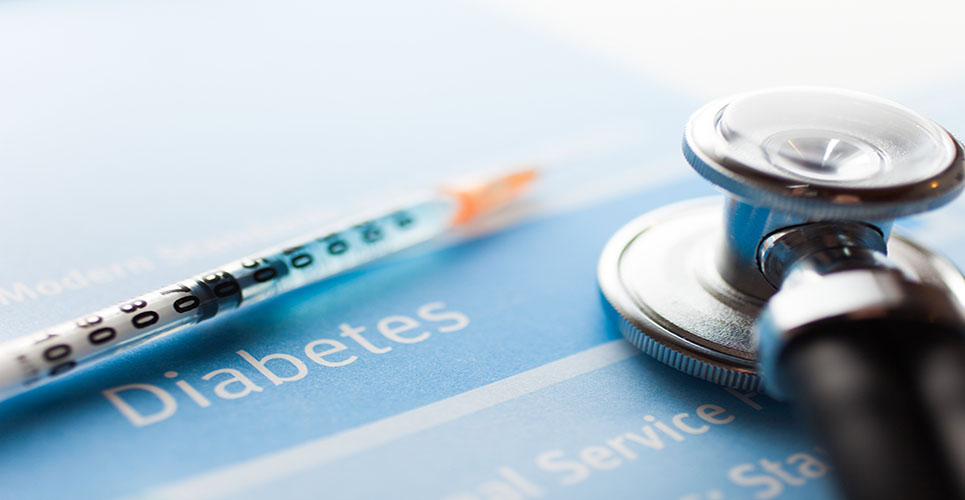The Lancet Diabetes & Endocrinology has published the phase 3a DUALTM I study investigating IDegLira (insulin degludec/liraglutide; Xultophy®) once-daily, single injection insulin degludec (Tresiba®) and liraglutide (Victoza®).
The Lancet Diabetes & Endocrinology has published the phase 3a DUALTM I study investigating IDegLira (insulin degludec/liraglutide; Xultophy®) once-daily, single injection insulin degludec (Tresiba®) and liraglutide (Victoza®).
The results show that people with type 2 diabetes taking IDegLira have a significantly greater reduction in blood sugar levels (HbA1c) compared to those taking either of the component parts (insulin degludec or liraglutide) alone. Furthermore, people taking IDegLira experienced no weight gain and a significantly lower (32%) rate of hypoglycaemia compared to insulin degludec. (1)
Control of HbA1c is a crucial target in diabetes management. In the United Kingdom (UK), the Quality and Outcomes Framework has set the HbA1c target as 58mmol/mol or less (≤7.5%). (3) Nearly three quarters of people with type 2 diabetes on basal insulin regimens in the UK fail to reach HbA1c of 58mmol/mol or less (≤7.5%) and are therefore at a greater risk of medical complications. (4-7)
Lead author Professor Stephen Gough, Professor of Diabetes, University of Oxford and Consultant Physician, Oxford Centre for Diabetes, Endocrinology and Metabolism, comments “Most people with type 2 diabetes will eventually require treatment with insulin to manage their glucose levels effectively, however, hypoglycaemia, fear of hypoglycaemia and weight gain can all be barriers to optimal insulin use. As a result, many patients fail to reach blood glucose targets and could be at increased risk of the long-term complications of diabetes.”
He continued: “Our findings from the DUAL ITM trial show that IDegLira combines the clinical advantages of insulin degludec and liraglutide into a single, once-daily injectable, allowing a higher proportion of patients to reach recommended glucose targets.”
The DUALTM I trial evaluated IDegLira in 1,663 people with type 2 diabetes inadequately controlled on oral antidiabetic (OAD) medications, compared to insulin degludec or liraglutide (1.8mg) alone:
• IDegLira showed a statistically significant mean HbA1c reduction of 1.9% (from baseline of 8.3%) achieving its primary endpoint of superiority versus liraglutide and non-inferiority versus insulin degludec (-1.3% and -1.4%, p<0.0001, respectively) (1)
• 81% of patients treated with IDegLira reached the HbA1c goal of <7%, and 70% reached ≤6.5% versus liraglutide alone (60% and 41%, respectively) and insulin degludec alone (65% and 47% respectively) (1)
• IDegLira resulted in a mean weight reduction of -0.5 kg from baseline and a 32% lower rate of confirmed hypoglycaemia versus insulin degludec (p<0.0023; 1.8 versus 2.6 events per patient per year).
Treatment with liraglutide alone, as expected, was associated with less hypoglycaemia and greater weight reduction. (1)
The results also show that once-daily IDegLira provides:
• Statistically greater reductions in postprandial glucose (PPG) following all three main meals of the day (breakfast, lunch and dinner) compared to insulin degludec (p<0.0001) (1)
• A statistically greater reduction in fasting plasma glucose (FPG) compared with liraglutide (p<0.0001). (1)
The most frequently reported adverse events seen with IDegLira in the DUALTM I trial are consistent with its individual components. Overall, the most frequently occurring adverse events were headache, nasopharyngitis and gastrointestinal disorders. (1)
Novo Nordisk received a positive CHMP Opinion for IDegLira in the EU on 24 July 2014 (2) and expects to receive the final marketing authorisation from the European Commission within the coming months.
References:
- Gough S, et al. Efficacy and safety of a fixed-ratio combination of insulin degludec and liraglutide compared to each of its components given alone: results of a phase 3, randomised, 26-week, treat-to-target trial in insulin-naïve patients with type 2 diabetes. Lancet 2014; doi:10.1016/S2213-8587(14)70174-3.
- EMA Summary of Opinion (initial authorisation): Xultophy®. Available at: http://www.ema.europa.eu/docs/en_GB/document_library/Summary_of_opinion_-_Initial_authorisation/human/002647/WC500170171.pdf. Accessed September 2014.
- Doctors.net.uk. Diabetes NICE Clinical Guidelines 2012:Locally Adapted Guidelines http://www.doctors.net.uk/_datastore/ecme/mod1101/Diabetes_NICE_clinical_guidelines_v02.pdf. Accessed September 2014.
- Novo Nordisk data on file (MEDINFO_HE_009).
- International Diabetes Federation. Diabetes Atlas 2013. Available at: http://www.idf.org/diabetesatlas Accessed September 2014.
- Stratton I, et al. Association of glycaemia with macrovascular and microvascular complications of type 2 diabetes (UKPDS 35): prospective observational study. BMJ 2000;321(7258):405- 412.
- Bethel M and Feinglos M. Basal insulin therapy in type 2 diabetes. J. Am. Board Fam. Med. 2005;18(3):199-204.

